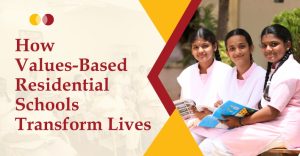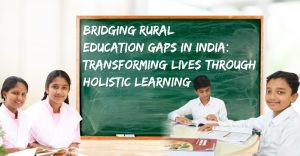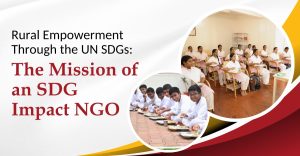
Introduction: Our Commitment to a Sustainable Future
At Each One Educate One Foundation, we align deeply with the United Nations Sustainable Development Goals (UN SDGs), working towards a world that thrives on equality, sustainability, and compassion. The UN SDGs—a universal call to action to end poverty, protect the planet, and ensure prosperity for all—serve as a guiding framework for our initiatives.
Our mission to provide free-of-charge, values-based rural education and holistic development directly contributes to several key goals, particularly SDG 4 Quality Education, while also impacting others such as good health and well-being, gender equality, clean water, affordable energy, and partnerships for sustainable development.
As an SDG impact NGO, we strive through every effort to create measurable change by driving sustainable development education and empowerment across rural India.
1. No Poverty (SDG 1): Breaking the Cycle through Free Education
We directly address rural poverty by providing free-of-charge, value-based education to children from underserved communities. Every student’s academic journey — from Grade 6 through PhD — is fully supported, covering not only tuition but also food, accommodation, clothing, and healthcare. By doing so, we transform education into a sustainable pathway out of poverty for the families and communities.
2. Zero Hunger (SDG 2): Nourishing Minds and Bodies
Our commitment extends to ensuring every student is well-nourished. Across all campuses, students receive four nutritious meals a day, Balanced diets, combined with nutrition supplements, create a foundation for good health, focus, and growth.
3. Good Health and Well-being (SDG 3): Nurturing Wholesome Lives
Regular medical check-ups and wellness practices such as yoga and meditation ensure that every child thrives physically, mentally, spiritually and emotionally. We believe education and health go hand in hand — one sustains the other.
4. Quality Education (SDG 4): Transforming Lives through Learning
Our greatest contribution lies in advancing SDG 4 Quality Education. Every student receives free-of-charge, holistic, values-based education, blending academics, character development, and experiential learning. Our UN SDG model ensures that both boys and girls — especially first-generation learners — have access to quality education that builds confidence, ethics, and leadership.
5. Gender Equality (SDG 5): Empowering Every Girl
We are proud advocates for girls’ education. Equal opportunities in academics, sports, arts, and self-defence are provided, ensuring that girls grow into strong, independent, and compassionate women. Through education, we help close the gender gap in rural communities, creating a ripple effect of empowerment.
6. Clean Water and Sanitation (SDG 6): Conserving Every Drop
Every campus follows rainwater harvesting, wastewater management, and recycling systems to conserve and reuse water responsibly. We align with the global call to ensure water sustainability for future generations.
7. Affordable and Clean Energy (SDG 7): Powering Change Sustainably
Most of our campuses are solar-powered, with a total capacity of 674 kWh, preventing approximately 790 metric tonnes of CO₂ emissions annually. Clean energy drives our mission, making every campus a step towards a greener planet.
8. Responsible Consumption and Climate Action (SDGs 12 & 13): Acting today for a greener, cleaner tomorrow.
We follow a zero-food-wastage policy and efficient carbon management practices, integrating sustainability into everyday operations. Over 50,000 trees planted across our campuses stand as living symbols of our environmental stewardship.
9. Partnerships for the Goals (SDG 17): Building Together
True sustainability thrives in collaboration. Our 3S Model — Samstha (Institutions), Samaj (Society), and Sarkar (Government) — reflects our belief in collective effort. Through partnerships with individuals, corporates, and communities, we create scalable, sustainable impact.
Conclusion:
Every initiative — from educating rural children to conserving natural resources — is part of a broader vision to advance the global SDG framework.
We see education not just as a right, but as the most powerful instrument of SDG impact — one that can eradicate poverty, ensure equality, and inspire generations of responsible global citizens.





